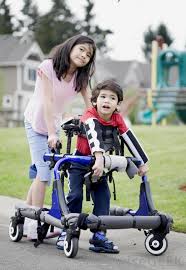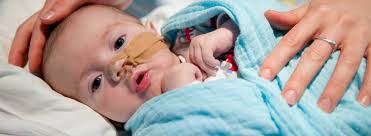 Cerebral Palsy (CP) is a neurological disorder that primarily affects body movement and muscle coordination. It causes physical impairment involving limitation or loss of function and mobility.
Cerebral Palsy (CP) is a neurological disorder that primarily affects body movement and muscle coordination. It causes physical impairment involving limitation or loss of function and mobility.
Individuals with CP can have difficulty with:
- muscle coordination
- muscle control
- muscle tone
- reflexes
- balance and posture
- fine or gross motor skills
- talking and swallowing
- thinking and reasoning
Some patients many also experience associative and co-mitigating conditions such as, seizures, learning impairment, hearing and vision loss throughout their lifetime.
CP is caused by an injury to the brain. It is non-life threatening and not degenerative – meaning the damage to the brain will not become worse over time. However, it is brain damage that cannot be fixed. While there is no cure for CP, there is an array of treatments and therapies that help patients with CP manage the affects.
What Causes Cerebral Palsy?
CP is caused by a brain injury, which can happen from:
- Abnormal brain development
- Injury to the brain prior to birth or during labor and delivery
- Traumatic brain injury after birth
There are two distinct types of CP – Congenital and Aquired.
Congenital CP comprises most cases (85-90%) and is related to brain damage that happened before and during birth.
According to the CDC, risk factors for Congenital CP include:
- Low birth weight
- Premature birth
- Multiple births
- Fertility treatments
- Infections of the mother during pregnancy
- Jaundice or kernicterus (severe jaundice)
- Medical conditions of the mother (thyroid issues, intellectual disability or seizures)
- Any birth complications which could have disrupted oxygen supply during delivery
Oftentimes CP caused by oxygen deprivation during delivery is entirely avoidable. Physicians and medical staff are trained to recognize and mitigate risk factors that could cause complications during delivery. The known risk factors include:
- Babies weighing over 9 lb 9 oz
- Babies born before the 37th week of pregnancy
- The mother’s pelvis is the wrong shape or size for a safe delivery
- Difficult labor or delivery (dystocia)
- Prolonged labor
- Abnormal fetal position at birth (baby is in a head-up, buttocks-first, or breech position)
When doctors and medical staff overlook or fail to mitigate known risk factors, a birth complication can quickly lead to prolonged oxygen loss and a devastating, permanent birth injury.
Acquired CP comprises a much smaller percentage of cases and is acquired more than 28 days after delivery and is usually caused by infection or head injury.
According to the CDC website, risk factors for Acquired CP include:
- Low birth weight
- Premature birth
- Infection
- Head injury or trauma
If you have a child with Congenital CP or Acquired CP and you suspect it was caused by premature birth, low birth weight, a difficult delivery or oxygen deprivation, your best course of action is to have an experienced personal injury attorney review the medical records. There may be negligence on the part of the physician or medical staff.
Casey Devoti & Brockland Partners Matt Casey, Matt Devoti and Anne Brockland, together have nearly 40 years of trial experience. They handle a variety of personal injury matters with a special emphasis on medical malpractice and birth injuries. Go to our website to learn more about the most common labor and delivery errors and the resulting birth injury. If you suspect your baby suffered a birth injury due to medical staff negligence, contact our office for a free, no-obligation consultation: (314) 421-0763.








